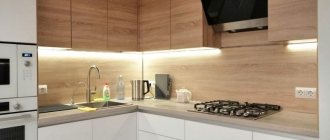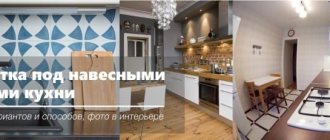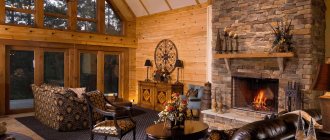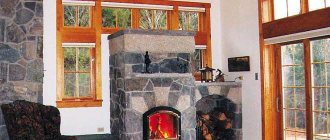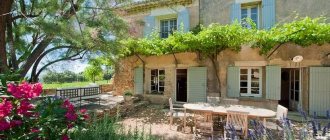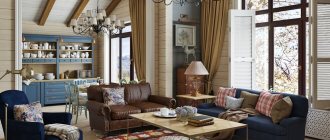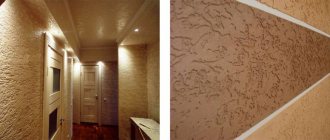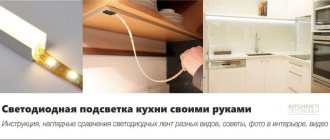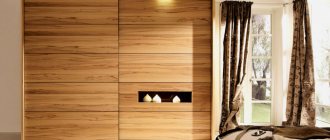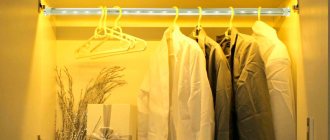The lighting design of the facade at night decorates the building, giving it a cozy and hospitable appearance. The article describes the principles of creation and functions of lighting the facades of private houses. You will learn the stages involved in developing an architectural lighting plan and what lighting equipment is used. The article will introduce you to the types of backlighting: flood, local and hidden, with their features and methods of implementation.
You can't help but admire it Source rupurt.com
About the functions of backlighting and the principles of its creation
Light design of facades is one of the ways of arranging the local area; owners of country houses are happy to use it as an additional element of the decor of their homes. Facade lighting can perform two functions:
- Aesthetic . Using techniques for illuminating the facade, you can highlight the architectural features of the house, give it a unique look, and make it stand out from the surrounding buildings.
- Practical . Facade lighting equipment illuminates not only the walls of the house. By decorating your home, you illuminate the surrounding area and ensure safe movement after sunset. For this purpose, individual elements are additionally illuminated - the porch or the entrance to the house.
To ensure that architectural lighting pleases the eye and does not cause trouble, it is arranged in compliance with the following principles:
- The system and its components must have the simplest and most reliable design possible . LED lamps have proven to be one of the easiest to use.
The charm of an illuminated facade Source netmostwebdesign.com
- The system must be economical in energy consumption.
- Facade lighting must be absolutely safe for residents of the house and their pets and comply with modern operational standards.
- It is desirable for the system to operate in automatic mode .
- The system must be maintainable .
Types of wooden houses
Conventionally, timber houses can be divided into standard, “with outbuildings,” single-story, multi-story, and composite houses. We will consider a standard house to be a house built into the understanding of a rectangle when viewed from above, without taking into account the adjacent gazebos and verandas.
Standard timber house
A wooden house “with outbuildings” is one of the most common and often found in various modifications.
House with outbuildings
One-story house made of timber
Less common are complex houses with more than 2 floors:
Complex house
3-storey house
Methods of organization and types of lighting
Facade lighting can be organized in different ways. Architectural practice includes lighting not only the main, front side of the building, but also the side walls. Contrary to popular belief, creating lighting design does not require the use of complex technical techniques and high consumption of materials. At the same time, it is necessary to strive for a harmonious result - all light sources must fit into the overall concept of lighting the area. The most common ways to organize lighting include:
- Installation of lighting sources on the walls of the building.
- Installation of hidden lamps .
- Use of remote lighting fixtures .
- Combination of methods.
Combined solution Source pa.unistica.com
All these lighting sources have different purposes and characteristics, so when choosing certain lighting elements, it is worth considering their functionality. To illuminate the facade, three types of lighting are organized:
- Decorative . Its only purpose is to create a spectacular view that will be the envy of neighbors and friends. In this case, it is allowed to highlight both individual facade details (for example, illumination of the roof of a house), as well as nearby plants and decorative elements of the local area.
- Technical . Auxiliary, enabling comfortable and safe use of stairs, house paths, doors.
- Accompanying . A type of technical; organized with the help of lighting fixtures equipped with special sensors that react by turning on when a person approaches.
Decorative lighting design Source ukrasheniyedoma.com
Selection of architectural lamps
Everything described above is, of course, applied to professional lamps. Conventional decorative lamps do not have in their characteristics the function of directivity of light, achieved by the angle of the pre-installed lens.
Most often, single-beam luminaires are used for façade lighting, less often bidirectional (two-beam) luminaires. You can see the equipment we use on the architectural lighting page.
In this article we will not consider LED strip lighting, for a simple reason - capriciousness to the external environment, a relatively short period of stable operation, diffused light, without directionality, and also an order of magnitude higher energy consumption when compared with lamps. It is also impossible not to mention linear lamps, with the help of which it is possible to effectively illuminate horizontal lines.
Nowadays it is correct to use lamps with built-in LEDs. Their service life allows you to forget about maintenance for 12-15 years, which cannot be said about lamp lamps, where the service life is an order of magnitude lower. In addition, professional LED lamps, due to the correct optics, allow you to achieve the desired effect even with a minimum power of 3-5W.
What else is important to know about choosing lamps
- light temperature - usually for houses made of timber it is warm white 3000K,
- the width of the lens angle - this determines how long the beam will be and how wide its illumination sector will be,
- lamp power - taking into account the lens, the lamp visually gives an enhanced spot of light at the beginning of the beam, the correct choice will avoid the visual effect of “burning” the beginning of the illuminated area,
- availability of a choice of mounting brackets - it is better if it is a closed mounting bracket that allows you to hide the supplied cable,
- the ability to use non-standard brackets for external and internal corners,
- the possibility of a protective hood option for lamps installed in the lower part of the facade, which is a decorative physical obstacle for the human eye to meet the lamp’s LED,
- it is correct that the lamp body is made of an alloy that allows heat to be removed (diodes are indifferent to cold, but do not like overheating),
- It’s very good if there is an option to choose the color of the case.
Architectural lighting plan
Decorative lighting of facades is gradually turning into an integral attribute of a modern country house. Not only holiday and New Year's lighting, but also permanent lighting design is becoming increasingly in demand. When creating a project for external lighting of a country house, special attention is paid to the following aspects:
- Architectural style of housing , features of external decoration (color, texture of materials).
- Landscape features and location of the house.
- The location of the viewing area is the place from which the house is best viewed.
Specialized construction companies carry out work of any level of complexity, including design, installation and repair of lighting systems. Development of an architectural lighting plan includes the following stages:
- Concept development and lighting design. The lighting method is determined and lighting devices are selected for various parts of the facade.
Project lighting in a modern style Source pinterest.com.au
- Preparation of the electrical network project. Sets the lighting mode and backlight brightness.
- Selection and purchase of equipment (luminaires, lamps, spotlights).
- Installation and commissioning.
See also: Catalog of companies that specialize in electrical work.
Is a project for lighting a house made of timber necessary or not?
Yes, the project is desirable. The main task of the project is to fix what should be at the output, what is required for this, the possibility of technical coordination with other types of work. Having a project, you can clearly assign tasks to the performers, control the progress of work, and be prepared in time and sequence. This is important, including from a cost point of view. As a rule, technically all systems in a house intersect and the project allows you to integrate facade lighting work into the general list of tasks, combining part of the work, which can significantly reduce the estimate, and most importantly time, and avoid rework.
You can learn more about this topic in the article “Project for illuminating the facade of a house”; there is also a ready-made example of a project in pdf format.
Types of lighting
Properly selected lighting for the facade of a country house can not only highlight the advantages of the building and the surrounding landscape design, but also hide the shortcomings (if any). To organize night illumination, professionals offer several types of street lighting.
Filling (filling)
A common option is when the building is completely illuminated, relevant for a separate object. An example of flood light is the lighting of various historical monuments, museums and theaters, whose view is not obscured by other buildings. Flood lighting has the following features:
- Lighting is created for the entire building , from the foundation to the roof.
Fill light Source www.tnl.de
A universal way to highlight a home Source northernnurseriesstonecenter.com
- For the method, it is possible to use two types of spotlights . More powerful devices create a basic diffuse light over the entire surface. Smaller spotlights highlight significant architectural details.
- The method is considered universal . Thanks to its intensity, the illumination not only makes the house stand out, but also at the same time creates a visibility zone around, which allows us to consider this option as optimal in terms of the ratio of financial expenses and results.
- There are some limitations in use . The method is rarely used in small areas. As a rule, such an area is characterized by dense development, in which it is impossible to identify the dominant structure, and the effect is lost.
Illumination of country houses: a little history
Designer Elena Golubkova has already told FORUMHOUSE readers about the role light plays in the interior of any building. It is no less important in the exterior: a well-designed outdoor lighting system can transform even an ordinary wooden building into a masterpiece without rebuilding or expensive finishing. Architectural lighting allows you to protect your home from thieves, and you from having to look for the keyhole in the dark.
Of course, facade lighting is not an invention of today. Torches were attached to the walls of buildings back in Ancient Rome, caring not so much about the beauty of the buildings, but about illuminating the streets at night. Torch lighting was common in Europe until the invention of kerosene lanterns and electricity - torch holders are now available on the outside of many buildings in England, France, and Italy. “Florence comes to me, phosphorescent with its houses, and, like a butler, unlocks its palazzos and fogs,” the poet Andrei Voznesensky shares the image in the poem “Florentine Torches.”
We talked in detail about how architectural lighting has evolved from torches to LEDs in our article. Our experts tell us how modern home lighting works.
Video description
About contour lighting in the following video:
Silhouette
Silhouette lighting creates an unaccentuated light background; the structure appears against a dark background, attention to detail is not drawn. Such hidden lighting for a country house can be successfully combined with local lighting; each of them serves to emphasize individual details of the structure, only the task is performed in different ways. The main idea is to reveal an element, to outline its shape using a source hidden behind the silhouette of the house (decor, architectural detail, plant). In many modern projects, such light pouring out of nowhere has an additional functional meaning.
Silhouette against the background of the night Source www.accentslighting.com
Contour
A method of decoratively highlighting the outline of architectural details of a building (stairs, balconies, bay windows); Often a specific outline of the architecture is highlighted. Fluorescent and LED lighting lamps are suitable for this method; lamps are mounted in the corners of the house, in window and door openings, and on the roof. In private homes, contour lighting is used mainly during the New Year holidays. To create colorful illumination, diode strips, duralight (a type of garland), and multi-colored lamps are used.
Outline design Source aovox.com
Why do buildings need lighting?
Here everything is both simpler and more complicated. It’s simpler, because you don’t have to coordinate with anyone, but it’s more difficult, because illiterate lighting will not fulfill its functions and, therefore, a lot of money will be thrown away. What functions should façade lighting perform? Several main directions:
- Practical, that is, directly illuminating important areas - stairs, doors, paths.
- Aesthetic – creating interesting design compositions.
- Decorative – highlights elements that you would like to highlight.
In order for everything to work out in the best possible way, think through the lighting devices, their brightness and location in advance and do not neglect the advice of professionals. The purpose of outdoor lighting is:
- improve visibility on the site in the evening and at night;
- draw attention to the house and other important buildings;
- emphasize the beauty of the building and hide its shortcomings and minor flaws;
- create a favorable psychological environment.
Facade lighting makes the house and area cozy, welcoming and safe at any time of the day.
Equipment
For façade lighting, professionals use a wide variety of lighting equipment, which includes the following lighting materials:
- LED spotlights and lamps . They can be monochrome or use RGB technology and change color.
- Cantilever luminaires with metal halide lamps . Recently, they have been used quite rarely for facade lighting.
- Gas-discharge (fluorescent) lamps.
- Spotlights under DRL lamp.
- LED strips and garlands . Long gone are the days when only the New Year tree was decorated with garlands. In modern design, garlands with various effects (mesh, rain, waterfall) are a favorite decoration technique.
Light sources for façade lighting
- Gas discharge lamps - they can be mercury, neon, xenon, glow in different colors and generally shine quite brightly. However, the content of harmful substances makes their use and, most importantly, disposal very problematic.
- Fluorescent lamps save energy, shine brightly, last a long time, but also contain harmful substances (in particular, mercury) and are susceptible to low temperatures. Therefore, they are not very good for the street.
- LED lamps are a wonderful invention of the human mind. They consume little electricity, last a long time, can glow in different colors, and are not afraid of “neither heat nor cold.” That is why they are most often used in street lighting.
Creating a lighting scenario for architectural lighting is a task that requires creative thinking, knowledge of the features of lighting technology, because outdoors it is subject to additional stress, the ability to accurately calculate all project parameters, a good sense of style and a professional approach.
Selection of lighting elements
In addition to the fact that lamps for outdoor lighting of houses must have the property of saving energy at high luminous intensity, they are also subject to “mechanical” requirements:
- The lamp must be placed in a durable and electrically safe housing. Lamps are often installed in an explosion-proof housing.
- The lamp must not allow moisture to enter the housing and be completely sealed (on the sealing scale - level IP65 or higher).
The most common are lamps in aluminum housings.
LED lamps in aluminum housing
Sodium element lamps in the form of tubes are used to create highly saturated yellow light. This type of lighting is widespread throughout the private sector. An alternative to this type are LEDs, which can be produced in the form of lamps, lamps or strips. Their choice is justified by great durability (guaranteed service life - 30 years), quality of light, reliability, and environmental safety.
Some of the most commonly encountered devices are also:
- Incandescent lamps. Since they are short-lived (1,000 hours), they are used for temporary lighting according to the principle: turn off when leaving the room.
Incandescent lamps
- Halogen. Their durability is 2,000 hours, the backlight color is white.
Halogen spotlight
- Mercury. They organize “moonlight” with a high flickering frequency. Unsafe from an environmental point of view. When the resource expires, they require special disposal.
Mercury vapor lamps
- Fluorescent lamps. Capable of evenly flooding the façade of a house or a garden plot with light. Unreliable: they fail from moisture and light mechanical influences, and stop functioning in the cold.
INTERESTING: Installing a shower drain
Fluorescent lamps
Recommendations
When arranging outdoor lighting, you need to act according to the advice of experienced craftsmen in the field of repair and construction. According to their recommendations, lighting devices used for architectural lighting must meet the following requirements:
- Multifunctionality - combining lighting and decorative functions.
- Weather protection.
- Safety in operation.
- Economical energy consumption.
- Simple and quick installation.
The following nuances should also be taken into account:
- Do not connect aluminum and copper wires.
- The lamp body must be aluminum. An alternative solution is a body made of acrylic or polycarbonate.
- Lamps for outdoor use must be at least IP65.
- It is better to conduct LED lighting through a transformer.
- Voids and differences can be played out with the help of flood light.
- It is obligatory to highlight the sign with the house and street number.
Requirements for street lamps
Installation of street light sources involves year-round exposure of lamps and lanterns to a number of meteorological influences.
Taking this factor into account, all purchased lamps must meet a number of requirements:
- Sufficient strength of the products, especially the lampshade.
- Moisture resistant.
- Availability of grounding.
- Ease of practical maintenance of the lamp, especially spring and autumn cleaning.
The photo of the façade lighting shows that all lamps are equipped with durable and moisture-resistant shades.
The shape and design of a garden lamp must fully correspond to the interior of a summer cottage or private house.
Norms and requirements
When designing and installing street lighting in the yard, it is important to be guided by basic standards, which in the future will ensure not only the ease of use of the local area, but also human safety:
- In accordance with clause 6.3.1 of the PUE for external lighting devices in the yard, you can use lamps of any principle of operation with the exception of security alarm devices, in which the installation of gas-discharge equipment is not allowed
- The installation location of lighting devices can be organized both on free-standing supports and on structural elements of buildings, structures, on the ground, on cables according to clause 6.3.2 of the PUE . But when hanging on a rope in accordance with clause 6.3.4 of the PUE, measures must be taken to prevent them from swinging.
- In relation to the ground, in accordance with clause 6.3.6 of the PUE, you can choose any height, however, when installing yard lighting in the ground, you must provide the installation site with a drainage system.
- If the luminaire is located on any structures below 2.5 m in accordance with clause 6.1.15 of the PUE, their level of protection from dust and moisture must be at least IP54.
- In accordance with clause 6.6.8 of the PUE, the installation of lighting devices must ensure a sufficiently reliable degree of fixation.
- Based on the requirements of clause 6.6.1 of the PUE, the installation location of lighting devices in the yard should be chosen so that there is easy access to it.
- In the regulations of clause 6.6.4 of the PUE , suspended models with a flexible holder are lowered no lower than 1.5 m, otherwise anti-swaying devices are applied to it.
Selecting the lighting control type
Depending on the frequency of use, all yard lighting devices can be divided into devices with automatic and manual activation. The first method is relevant for those houses where the light in the yard should come on with the onset of darkness and go out with the first rays of dawn. If you want to control the lighting process yourself, it is better to install manual or mechanical switching.
Mechanical
To implement the mechanical switching on of lighting in the yard, key switches or contactors are installed. The first option is used for low-power loads, when one switch runs several LED lamps with low power. The contactor is used to switch powerful lighting in the yard when you have several lighting groups installed that create a large load. At the same time, you can divide all the yard lighting groups under several key switches or buttons if you run them using a remote control.
Automatic
Lighting automation allows you to eliminate the human factor as much as possible from controlling the switching process. This will allow you not to worry about lighting while you are away or eliminate the need to constantly turn on and off yard lighting.
To implement automatic backlighting, the following can be introduced into the power supply circuit of LED spotlights:
- photo relay - turns on the yard lighting when it gets dark;
- motion sensor - supplies power only when moving in a given area of space;
- time relay - allows you to set a program for turning on and off in a certain time interval (from a daily schedule to several minutes).
All of the above automation tools can be installed either separately or together. For this, a serial connection diagram is used, as shown in the figure below:
Calculation of façade lighting
The first and most important step for the future owner is to calculate the required lighting for the building's facade. This indicator directly depends on the initial area of the garden plot, the size of the load-bearing wall for placing hanging lanterns and lamps, and the presence of a decorative gazebo or other recreation area for the owners.
In addition, the preliminary design must take into account the materials used for exterior finishing in order to install façade lamps. For ground lamps, it is advisable to know the level of soil acidity, which can have a detrimental effect on the base and lampshade material. The calculation is carried out in accordance with the requirements of GOST.
How to calculate façade lighting:
- External architectural lighting should provide good visibility and figurative expressiveness of the most important objects, and the comfort of the light environment, help identify the originality of the composition and the quality of planning and development.
- The lighting created should have a beneficial effect on the psychological mood of the residents of the house.
- To illuminate objects with “cold-white” color shades of surfaces and green spaces, lamps with a color temperature of 4000 to 6000 K should be used. To illuminate objects with “warm white” colors, lamps with a color temperature of 2200 to 3500 K should be used. .
Light sources with a power of more than 150 W, installed directly on the ground at the level of possible human contact with heated parts, must be equipped with decorative protective covers.
Nuances of electrical installation work
When installing and connecting lighting fixtures in the yard, several important nuances should be taken into account:
- Before starting work, draw up a yard lighting diagram linked to the site plan - this will save time and money spent on incorrect calculations.
- It is more expedient to lay the electric cable in the ground - this will preserve the aesthetics of the yard; the depth of its location should be at least 0.8 m.
- All lamps must have a quality certificate allowing them to be used outdoors. Otherwise, over time, the housing may collapse from exposure to atmospheric factors.
- The connection points and connections of the supply wires must be buried in a sealed box that prevents moisture from entering.
- Street wires running along the open part of the facades must be protected from exposure to sunlight.
- You can install solar-powered LED lamps, but you won't get much light from them.
